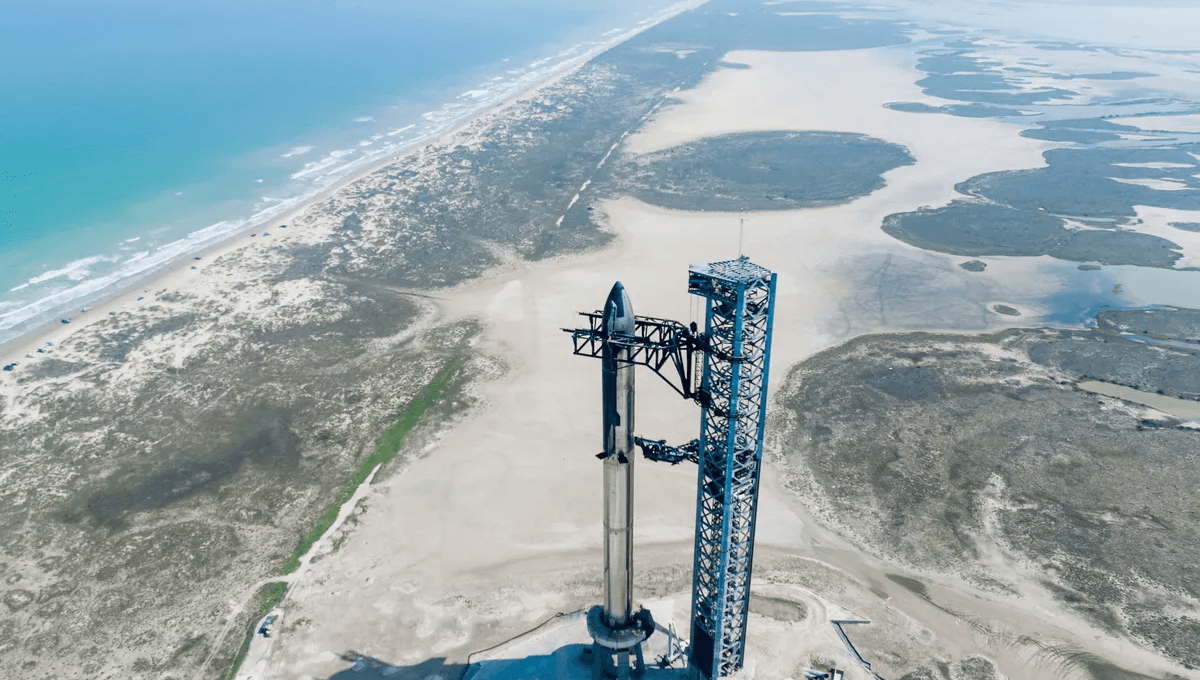
SpaceX’s Starship continues to miss its goals. In a test that Elon Musk’s company called a “partial success,” Starship was able to reach orbital velocity thanks to the powerful booster – but several failures, including a fuel leak, led to a loss of altitude. It disintegrated over the Indian Ocean instead of attempting a landing burn and splashdown.
This was the ninth flight test for Starship, and so far, only four of them have been able to achieve all the objectives for the space vehicle, and five of them for the booster, which also did not end the way the team expected this time. This launch was the first flight reusing a Super Heavy Booster, and it was pushed to its limits, including a new landing trajectory. It was supposed to splash down over a specific area of the Gulf of Mexico, but 21 seconds after the landing burn, it exploded.
Starship launched from Starbase in Texas at 6:36 pm local time. It flew for almost 48 minutes, but before the final failure, several things did not go to plan. The craft has eight demo satellites that it was going to release into space to showcase its capability as a vehicle that can deliver payloads into different orbits. However, the payload door did not open, and another crucial test, the ability to relight the Raptor engine in space, was scrapped due to the loss of altitude control.
This test was seen as a clean break from the failures of Flight 7 and Flight 8, but even with the initial success, the vehicle continued to fail to deliver on expectations. A few months back, Starbase General Manager Kathy Lueders mentioned in a conference that she’d love to see Starship caught by the Mechazilla arms system before April. That clearly did not happen, and with this new setback, it might not happen for a few more flights.
Starship and Super Heavy are the biggest and most powerful rockets ever built. In total, they make up a rocket that is 122 meters (400 feet) tall. Starship is also crucial to the human return to the Moon. The vehicle is supposed to ferry astronauts from lunar orbit to the lunar surface in Artemis III. For that to happen, Starship needs to demonstrate that it is a safe and reliable vehicle.
But it might have a much bigger role, given the intent of the Trump administration to scrap the Space Launch System and the Orion Capsule, which successfully flew uncrewed in December 2022, and is expected to take astronauts around the Moon with Artemis II early in 2026. The budget pushes NASA to be more reliant on private companies, namely SpaceX’s Starship and Jeff Bezos’s Blue Origin, for future lunar exploration. Many have highlighted the conflict of interest between Musk’s involvement in the administration and this decision.
There are also geopolitical ramifications to the failure of Starship. The uncertainty of the launch and the often catastrophic way in which the vehicle is disposed of over the Indian Ocean meant that flights by Qantas between Australia and South Africa had to be delayed, as reported by Reuters. The previous explosion over the Caribbean also led to many aircraft having to be diverted or delayed, with debris raining on beaches and streets, even damaging cars – luckily with no casualties.
ProPublica reports that the British Government has even asked the Federal Aviation Authority to alter the timings of the launches to minimize the danger to people and the economic impact of the Starship explosions on British Overseas Territories and other Caribbean nations.
Source Link: Musk’s SpaceX Starship Lost In Reentry After String Of Explosive Failures During Flight Test